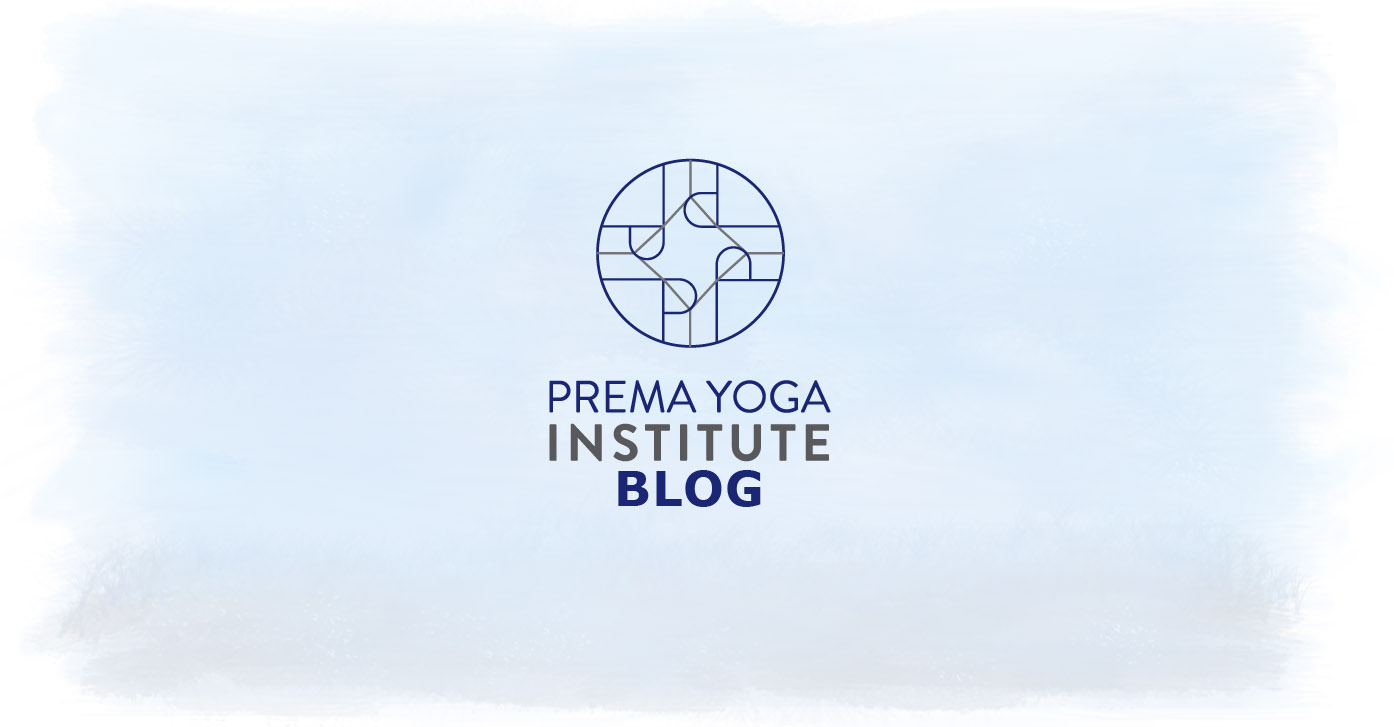
Nurturing Young Minds: The Eightfold Path in Kid’s Yoga
The Eightfold Path, also known as the “8 Limbs of Yoga”, is a foundational concept for the practice. Sage Patanjali, credited for several Sanskrit works, advanced this path. He is also credited with the codification of The Yoga Sutras.
In this blog, we will talk about some of the translations of these limbs and how these apply to teaching kids’ yoga classes.
Yama
The first path consists of the ethical guidelines known as yamas. It refers to our relationship with ourselves. It also often refers to the restraints we put on ourselves.
There are several yamas:
Ahimsa - This refers to being non-violent and showing compassion in our thoughts, words, and actions towards ourselves and others.
Aparigraha - This refers to taking only whatever is necessary. This only means letting go of something that you don’t need so others can use it.
Asteya - This refers to honesty. It means not to take anything that does not belong to you.
Brahmacharya - This refers to celibacy and abstinence from sensual pleasures as doing so helps free up your energy, allowing you to connect to the divine.
Satya - This refers to being truthful.
Niyama
The second path is the niyamas. These are ethical ruled in regards to our relationships with others. There are several niyamas as well:
Ishvara Pranidhana - This refers to surrender.
Santosha - This refers to modesty and being content.
Saucha - This refers to purity and being clean in our thoughts, words, and actions.
Svadhyaya - This refers to self-study.
Tapas - This refers to our self-discipline and overcoming adversity.
Asana
The third path is asana. This refers to the physical postures. This is the yoga that most Western people know - and poses asanas can provide great fun and imaginative exercise for kids. But as a certified kids’ yoga instructor, you have to understand that asana is not all there is to yoga.
Pranayama
The fourth path is pranayama. This refers to breathwork and management of prana - our life energy. Through breathwork activities, practitioners can connect their breaths with their minds and emotions.
Pratyahara
The fifth path is pratyahara. This refers to withdrawing the senses. Withdrawing from the external world allows ourselves to be more conscious and look inwards.
Dharana
The sixth path is dharana. This refers to our concentration. It helps us focus on a single point, which can either be an object, a mantra, or anything.
Dhyana
The seventh path is dhyana. This refers to meditation. It allows us to reach that mental state where we are aware of our surroundings but we do not focus on them.
Samadhi
The eighth path is samadhi. This refers to the ultimate state of being. This is the state where there exists a connection to all aspects.
Applying the Eightfold Path to Kids’ Yoga
The paths, or limbs, are often intertwined and are interrelated to each other. The limbs overlap each other, resulting in a holistic approach to wellness. When you teach kids’ yoga classes, you will have to explore the children’s figurative limbs to better understand themselves, their relationships with others, and their surroundings.
Focusing the eightfold path allows the young ones to apply yoga’s beautiful tenets to their everyday lives:
The yamas encourage connection between the children. Upon establishing such a connection, kids then allow themselves to engage in fair play, making sure that everyone is enjoying equally. When disagreements do arise, they use a non-violent and truthful approach.
The niyamas encourage children to be responsible in different areas of their lives. They also encourage personal care and self-discipline.
The asanas are good for play and exercise. Young ones can benefit from physical movement - and exercise their imagination in pretending to be lions, warriors, trees and more.
Pranayama can help children learn how to manage their emotions, especially when they are either excited or upset.
Pratyahara encourages children to reflect on themselves, which is important in helping them understand the effects of their actions, whether they're good or bad.
Dharana helps improve the children's concentration. This is beneficial especially when they are studying, doing their homework, completing house chores, and more.
Dhyana helps young ones learn how to focus and stay calm - whatever their surroundings may be.
Samadhi can encourage all-around wellness - ensuring kids' holistic wellbeing and development.
Interested in training to become a Certified Kids Yoga Teacher? Our Yoga Alliance-approved course is online this August 2025! Please check out all the information HERE.
Top Benefits of Kids' Yoga for Health, Focus, and Emotional Well-Being
Literally meaning “union”, yoga allows the body and the mind to be connected. With a 5000+ year lineage, yoga was introduced first to the West in 1893. Since then, it has expanded and evolved drastically.
Most people tend to associate yoga with adults. But there’s actually also yoga for children. In this blog, we’ll discuss how kids’ yoga is different from the traditional yoga that adults do and how beneficial it is for young ones.
How Does Kids’ Yoga Differ from Adults’ Yoga?
Any certified kids’ yoga teacher should know and understand the differences between yoga for children and adults. In the former’s case, the classes are typically more exploratory and focus more on play. They also tend to be integrated with more experiential elements, but this will depend on a number of factors.
Teaching kids’ yoga lessons means looking at the entirety of the child and identifying how to meet their needs best. It also offers a number of benefits in the physical, emotional, behavioral, and cognitive areas.
Let’s discuss these benefits below:
Physical Benefits
First up, yoga offers physical benefits. It helps the body to open up, thereby allowing the child to increase the connection between their mind and their body. It also helps activate the autonomic nervous system. Yoga also improves the child’s respiration since breath is the portal to the nervous system. Most importantly, yoga helps lower stress levels, allowing the body to get back into balance.
Emotional Benefits
Yoga is also emotionally beneficial for children. It helps them to be more self-confident. It also helps them feel safer and stronger. It also helps them become more resilient and empowers both the kids’ yoga instructor and the child. Through breathwork and movement, yoga can also help minimize the symptoms caused by depression and anxiety.
Behavioral Benefits
Through yoga, the young ones are able to develop a level of trust in other people. As a result, it can help them create meaningful connections with others. Most importantly, yoga allows them to repair any disruptions that might exist between their relationships with others. These are only some of the behavioral benefits such classes can offer the children.
Cognitive Benefits
The cognitive benefits of yoga in children cannot be underestimated. Through breathwork, they can focus and concentrate better. It also helps them become more imaginative. Through mindful movements, the young ones can increase the connection between their mind and body as well as think better since their prefrontal cortex becomes thicker.
Conclusion
Yoga offers comprehensive benefits not only for adults but also for children. With the help of a certified children’s yoga instructor, the young ones will be able to take advantage of these benefits and improve their wellness.
Interested in training to become a Certified Kids Yoga Teacher? Our Yoga Alliance-approved course is online this August 2025! Please check out all the information HERE.
What is Dinacharya? How Yoga Therapy Uses These Daily Self-Care Routines
Ayurveda, the ancient science of life, emphasizes the profound impact of daily routines on overall health. This practice, known as dinacharya, is designed to align the body with natural rhythms, promoting balance and longevity.
In the context of yoga therapy, dinacharya serves as a powerful tool to restore equilibrium in the body and mind, fostering long-term well-being. By incorporating mindful rituals into our morning and evening routines, we create a foundation for physical, mental, and emotional health that enhances our yoga practice and therapeutic healing.
Why is Dinacharya Important in Yoga Therapy?
“A daily routine is absolutely necessary to bring radical change in body, mind, and consciousness,” says renowned Ayurvedic physician Vasant Lad.
In yoga therapy, daily routines help regulate digestion, optimize biological rhythms, and instill discipline and self-awareness. They also support the therapeutic process by reducing stress and addressing doshic imbalances.
In modern life, where overstimulation and stress are common, dinacharya provides a grounding force, especially for balancing vāta, the most easily disturbed dosha. Yoga therapy integrates dinacharya to create a structured approach for clients seeking long-term healing and balance.
Morning Routine: Awakening the Body and Mind for Yoga Practice
Ayurveda suggests rising with the sun to align with the body’s natural circadian rhythms. Upon waking, practices such as drinking warm water, emptying the bowels, and engaging in self-care rituals prepare the body for the day and enhance the effectiveness of yoga therapy.
These include:
Tongue Scraping & Oral Care: Cleansing the tongue removes accumulated toxins (āma) and provides insight into digestive health.
Oil Pulling & Gum Massage: Swishing oil, such as sesame or coconut, supports oral hygiene and removes toxins.
Nasal Cleansing (Neti & Nasya): Flushing nasal passages with saline and lubricating them with oil improves respiration and mental clarity.
Abhyanga (Self-Massage with Oil): Massaging warm oil into the skin nourishes the tissues, improves circulation, and calms the nervous system.
Prāṇāyāma, Yoga, and Meditation: Breathing exercises, movement, and mindfulness set the tone for a balanced and energized day.
Evening Routine: Preparing the Body for Deep Sleep
The evening is a time to wind down and shift into a state of relaxation. Avoiding screen time, bright lights, and overstimulation supports deeper rest.
Recommended practices include:
Abhyanga for Relaxation: Evening oil massage can calm the nervous system and prepare the body for sleep.
Herbal Teas and Warm Milk: Drinking soothing beverages, such as golden milk with turmeric, enhances digestion and relaxation.
Meditation or Gentle Yoga: Slow movement, restorative yoga, and relaxing mindfulness practices help transition into restful sleep.
Creating a Sustainable Routine for Yoga Therapy
Adopting a full Ayurvedic routine may seem overwhelming at first, but gradual integration is often most effective. Small, consistent changes - such as going to bed earlier, drinking warm water upon waking, or incorporating a short meditation - can lead to significant improvements in health and well-being.
In yoga therapy, these routines provide structure and stability, allowing individuals to harness their inner healing potential.
By honoring the rhythms of nature through dinacharya and integrating these practices into yoga therapy, we cultivate a sense of harmony that extends beyond the physical body. This practice allows us to reconnect with ourselves and move through life with greater ease, awareness, and healing.
Looking to study Ayurveda, Ayurvedic Yoga teaching and therapy further? Check out our annual 100-hour Ayurvedic Yoga Therapy Course.


















